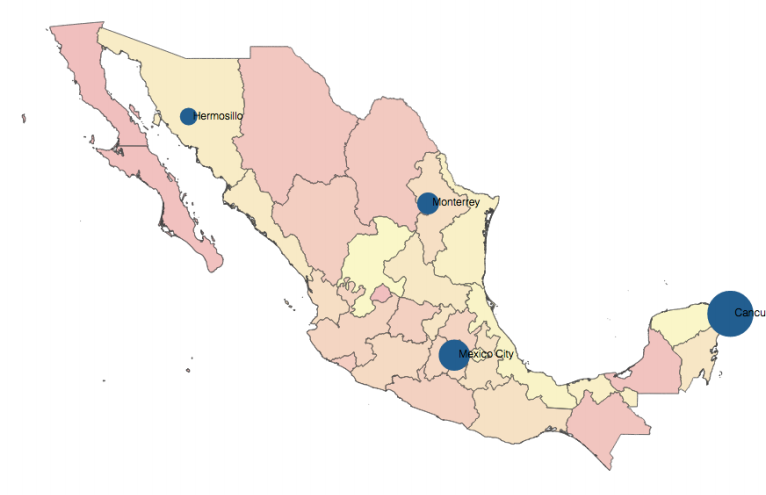I've implemented an infographic / map using crossfilter and d3.js.
What I would like is to add the functionality of rendering different data entries as points of interest on the map:
For example here we have cities in Mexico and data to indicate a metric of tequila consumption.
What I would like to make is, for instance, tequila consumption in different cities of Europe.
How can I overlay such information over my map of Europe.
The thing is, it's very clear how to do this with d3.js but it is unclear how to achieve this with a map that is working with dc.js, i.e. crossfilter.
All of my code can be found here.
This is the part most closely related to the map itself:
//This is the data for the Map
d3.json("data/europe.json", function (error, eu) {
console.log('map', eu)
usChart
.width(590)
.height(500)
.projection(projection
.scale((1200 + 1) / 2 )
.translate([660 / 4, 3360 / 4])
.precision(.1))
.dimension(countries)
.group(countriesJobsdSum)
.filterHandler( function(dimension, filter) {
dimension.filter(
function(d) {return usChart.filter() != null ? d.indexOf(usChart.filter()) >= 0 : true;}); // perform filtering
return filter; // return the actual filter value
})
.colors(d3.scale.quantize().range(
["#8c857d", "#d982ab", "#d9525e", "#a63f52", "#8c6976", "#55b1b1", "#637e9e"])
)
.colorDomain([0, 200])
.colorCalculator(function (d) { return d ? usChart.colors()(d) : '#ccc'; })
.overlayGeoJson(eu.features, "countries", function (d) {
return d.properties.name;
//return d.properties.Country;
})
.transitionDuration(0)
.title(function (d) {
return "Country: " + d.key + "\nNumber of Jobs: " + numberFormat(d.value ? d.value : 0) ;
});

